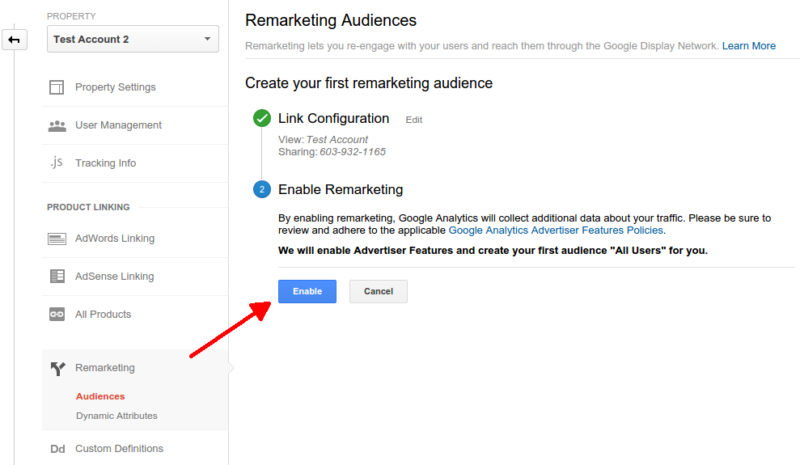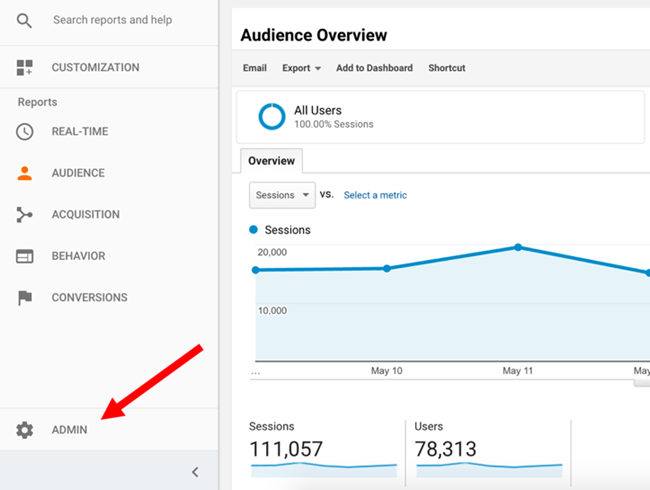A Full Guide to Remarketing In Google Analytics
A Full Guide to Remarketing In Google Analytics
Blog Article
Unlocking Remarketing in Google Analytics: Boost Your Conversion Rates
The art exists in strategic target market segmentation and crafting compelling ad content that resonates with customers. The key to opening the complete possibility of remarketing lies in comprehending user behavior and passions to make best use of ROI.
Comprehending Remarketing in Google Analytics
Remarketing in Google Analytics is a powerful tool that permits organizations to re-engage and target with customers who have formerly interacted with their site or app. By utilizing this function, organizations can present targeted advertisements to individuals as they surf the web or utilize other applications, advising them of solutions or products they previously saw. This critical technique helps services stay top-of-mind with prospective customers, raising the probability of conversion.
One secret element of remarketing in Google Analytics is the capacity to develop customized target market listings based upon particular criteria such as web pages seen, activities tackled the website, or market details. These checklists enable businesses to tailor their remarketing projects to various sections of their target market, making certain that the appropriate message reaches the best people at the ideal time.
Additionally, remarketing in Google Analytics supplies beneficial understandings right into individual behavior and the effectiveness of marketing campaigns. By tracking user communications and conversions, organizations can improve their techniques to improve targeting and take full advantage of ROI. Generally, recognizing the ins and outs of remarketing in Google Analytics is crucial for companies seeking to increase conversion rates and drive growth.
Establishing Remarketing Checklists
When applying remarketing approaches in Google Analytics, the initial action includes producing tailored target market lists customized to details requirements. Next off, click on the +New Target market switch and select the type of target market you desire to create, such as users who visited a details web page or finished a specific action. You can further refine your target market by adding specific problems and parameters to ensure you reach the appropriate users with your remarketing campaigns.

Crafting Compelling Remarketing Ads
Crafting engaging remarketing advertisements includes strategically developing messages that reverberate with your target audience and drive them to take wanted activities. To create efficient ads, it's necessary to recognize your audience's behaviors, preferences, and needs. Customization is type in remarketing ads, so consider utilizing vibrant advertisements that reveal products or solutions that a customer has previously watched on your site. This customized strategy can dramatically raise involvement and conversions.
In addition to personalization, engaging advertisement duplicate is critical. Consisting of incentives like price cuts or limited-time deals can likewise assist boost click-through rates.
Aesthetic appeal is another crucial facet of crafting compelling remarketing ads. Use top notch images or videos that display your products in a engaging and eye-catching method. An aesthetically enticing advertisement is most likely to get hold of the target market's interest and drive them to revisit your website. By integrating personalization, convincing duplicate, and attractive visuals, you can develop remarketing great post to read advertisements that effectively re-engage customers and increase your conversion rates.
Analyzing Remarketing Performance

Click-through prices (CTRs) show the percentage of customers that clicked on the advertisement after seeing it. A high CTR symbolizes that the advertisement is interesting and relevant to customers. Conversion rates reveal the percent of customers that completed a desired activity, such as purchasing or authorizing up for an e-newsletter, after clicking on the advertisement. Assessing the expense per purchase helps in understanding the costs incurred to obtain a client via remarketing. Return on advertisement invest (ROAS) determines the income generated for every single dollar spent on marketing, indicating the earnings of the project. By evaluating these performance metrics, marketing professionals can recognize areas for enhancement and refine their remarketing methods to boost conversion rates and total campaign success.
Maximizing Remarketing Approaches

In addition, maximizing remarketing methods includes segmenting target markets based on numerous standards such as demographics, behavior, and interests. By creating targeted advertisements that resonate with each sector, online marketers can increase the chance of re-engaging customers and driving conversions.
Continuous tracking and optimization of remarketing projects based on real-time information and understandings are necessary for optimizing ROI and improving conversion prices. By executing a data-driven strategy and refining techniques based on performance metrics, marketing experts can unlock the full potential of remarketing in Google Analytics.
Conclusion
To conclude, using the power of this link remarketing in Google Analytics can substantially boost conversion prices by re-engaging with previous site site visitors through customized ads. By producing custom-made audience checklists, crafting compelling advertisements, examining efficiency metrics, and continually enhancing methods, businesses can optimize ROI in remarketing projects. This data-driven method ensures that marketing efforts are targeted and efficient in driving user involvement and eventually boosting conversions.
Overall, understanding the intricacies of remarketing in Google Analytics is crucial for businesses looking to increase conversion rates and drive growth.
You can additionally fine-tune your target market by adding specific problems and criteria to guarantee you get to the best users with your remarketing projects.
By integrating customization, persuasive copy, and attractive visuals, you can create remarketing advertisements that successfully re-engage customers and improve your conversion rates.
By assessing these efficiency metrics, marketing professionals can determine areas for improvement and improve their remarketing strategies to improve conversion prices and general campaign success.
In final thought, harnessing the power of remarketing in Google Analytics can considerably enhance conversion prices by re-engaging with previous internet site visitors with tailored advertisements.
Report this page